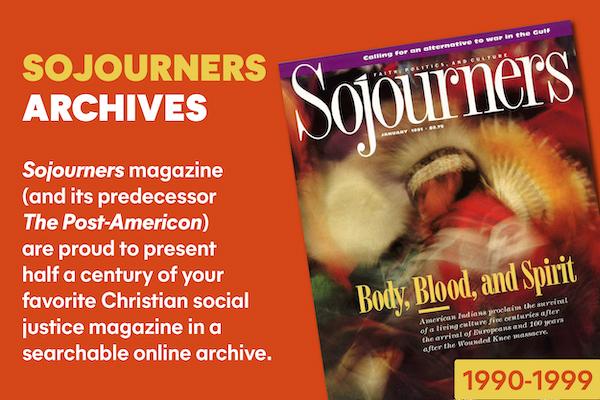The Black Church and the African American Experience, by C. Eric Lincoln and Lawrence H. Mamiya, is an essential contribution to the literature on black churches, filling a void left by studies decades old. This book brims over with relevant analysis on black church clergy and life, making this the definitive source for years to come. Lincoln and Mamiya successfully shoulder the mammoth task of black church social description.
Born in slavery, weathering urbanization, and experiencing substantial class differentiation within its ranks, the black church is still the largest, most important institution within the African-American community. Providing a comprehensive picture of the black church is not easy, not so much because of the enormity of such a research task, but because of the unwieldiness of the subject.
First, black churches are legendary for their poor record keeping. Internal surveys on such topics as denominational membership, clergy education and occupational status, and finances often do not exist.
Second, despite their historical and cultural relevance, black churches are rarely the beneficiaries of scholarship and investigation. The last comprehensive survey of black churches was the Mays and Nicholson study completed nearly 60 years ago. Recent scholarship on black churches is greatly hindered by the absence of reliable statistical data. Lincoln and Mamiya's study will assist in establishing a large base of survey data, especially regarding the seven major black denominations: African Methodist Episcopal; African Methodist Episcopal Zion; Christian Methodist Episcopal; National Baptist Convention, U.S.A. Incorporated; National Baptist Convention of America, Unincorporated; Progressive National Baptist Convention; and Church of God in Christ.
The book begins with a brief discussion of the black sacred cosmos -- the worldview of the Africans brought here as slaves. Unlike the sacred/secular distinction central to Euro-American thought, the entire universe was sacred to these Africans.
This worldview, in conjunction with the oppressive experiences of slavery, segregation, and racial discrimination, profoundly influenced the African-American Christian ethos. For instance, the focus upon a God who became human and endured suffering, humiliation, and death is stressed.
The authors cite the importance of "the dialectical model of the black church." This model views black churches as institutions where opposing factors -- charismatic vs. bureaucratic, communal vs. privatistic, priestly vs. prophetic -- are held in "dynamic tension," thus allowing "a more comprehensive view of this significant institutional sector."
LINCOLN AND MAMIYA include a history of three main black denominations -- Baptists, Methodists, and Pentecostals. They detail their origins, periods of extensive growth, church offshoots, and forms of worship. Later chapters include survey research of urban and rural clergy and churches, clergy and the black consciousness movement, political and civil rights involvement, finances, economic involvement, women, young people, and music.
In these chapters, a critical point concerning the impact of black theology on black clergy is put forth. Though black consciousness in general runs high in black churches, only a minority of black clergy (34.9 percent) feel that they have been influenced by any of the authors or thinkers of black theology. Black theology is an intellectual movement impacting upon the educated elite of the black clergy. Like many initiatives of the black middle class, its impact upon the lower classes is minimal. In the view of Lincoln and Mamiya, this class cleavage, and its resultant problems, represents one of the major areas of challenge for the black church.
Critically, had the strictly informational chapters been tied more explicitly to their theoretical outlook, it would have made this comprehensive work more manageable and digestible. As it stands, the history, statistical data, and analysis, while serving as factual resource, do not contribute sufficiently to a sociology of black churches or even a "general theory for the social analysis of black religious phenomena."
Also, the female voice -- even with membership rolls running 70 percent female in black churches -- is muffled, to say the least. This book does not even touch the experiences or views of the largely female laity. The overwhelmingly male clergy of the black church constitute Lincoln and Mamiya's main resource.
Even the chapter titled "The Pulpit and the Pew: The Black Church and Women" is a disappointment. While it explores the history of black women as preachers, it deals almost exclusively with male attitudes toward the ordination of women. These male views are not surprisingly quite negative.
This preoccupation is again apparent when the authors attempt to account for the preponderance of women in black churches. They detail socioeconomic forces that remove black men from churches. But while homicide, unemployment, drug abuse, and crime remove black men from churches in disproportionate numbers, they do not explain why women continue to be so drawn to these same churches. Lincoln and Mamiya lend very little insight into this question.
These criticisms notwithstanding, The Black Church and the African American Experience is probably the most important work on the black church to materialize in decades.
Karen Minott was a freelance writer living in Dorchester, Massachusetts and a member of the Azusa Christian Community when this article appeared.
The Black Church and the African American Experience. By C. Eric Lincoln and Lawrence H. Mamiya. Duke University Press, 1990, $47.50, cloth; 1992, $19.95, paper.

Got something to say about what you're reading? We value your feedback!
